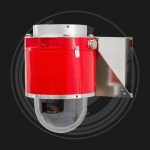Working in the oil and gas industry involves dealing with hazardous materials and environments. Ensuring the safety of workers and operations is a top priority. Advanced monitoring systems play a crucial role in maintaining this safety. These systems help detect potential hazards, monitor critical operations, and provide real-time data to prevent accidents.
The importance of having robust monitoring systems cannot be overstated. They help mitigate risks such as gas leaks, equipment malfunctions, and fire hazards. By continuously observing the worksite, these systems ensure that any issues are quickly identified and addressed. This proactive approach significantly reduces the chances of accidents, keeping workers safe and operations running smoothly.
Understanding the Importance of Monitoring Systems in Oil and Gas Safety
Monitoring systems are crucial in the oil and gas industry because they help protect workers and equipment from potential hazards. These systems continuously track various parameters to ensure operations run smoothly and safely. By detecting early signs of trouble, monitoring systems can prevent accidents and minimize damage.
Various risks are present in oil and gas operations, such as gas leaks, equipment failures, and chemical spills. These dangers not only pose threats to workers’ safety but also to the environment. Monitoring systems equipped with advanced sensors and cameras can quickly identify problems, allowing for immediate interventions and reducing the likelihood of incidents. Using explosion-proof cameras further enhances safety by ensuring monitoring continues even in the harshest conditions.
Key Features of Advanced Monitoring Systems
Advanced monitoring systems offer several essential features that improve safety and efficiency. Real-time data collection is a key component, providing instant information about the status of operations. This data can be analyzed to identify patterns and predict potential issues before they escalate. Alert systems are another critical feature, sending notifications to personnel when abnormal conditions are detected.
Remote monitoring capabilities allow for continuous oversight, even from distant locations. This means experts can keep an eye on operations without being physically present in hazardous areas. Explosion-proof cameras play a vital role in these systems by providing clear, live video footage from dangerous environments. These cameras are designed to withstand harsh conditions and prevent ignition risks, making them indispensable for comprehensive safety monitoring.
Understanding the Importance of Monitoring Systems in Oil and Gas Safety
Monitoring systems are crucial in the oil and gas industry due to the high-risk nature of the operations involved. These systems help keep track of equipment health, detect hazards, and ensure that safety protocols are followed. Without effective monitoring, even minor issues can quickly escalate into serious accidents, endangering workers and the environment. By providing real-time data and alerts, monitoring systems enable timely responses to potential dangers, preventing accidents before they occur.
The risks present in oil and gas operations include equipment failures, gas leaks, fires, and hazardous working conditions. Monitoring systems can mitigate these risks by continuously observing key indicators and detecting anomalies. For example, sensors can monitor gas levels to detect leaks early, while temperature sensors help prevent fires by identifying overheating equipment. These systems play a key role in maintaining a safe working environment, ensuring that any potential problems are promptly addressed.
Key Features of Advanced Monitoring Systems
Advanced monitoring systems offer a range of features designed to enhance safety and operational efficiency. Some of the essential features include real-time data collection and analysis, which allows for immediate detection of irregularities. Alert systems are another vital component, providing instant notifications to operators and enabling quick action to prevent accidents. Remote monitoring capabilities further improve safety by allowing operators to oversee operations from a distance, reducing the need for personnel to enter hazardous areas.
Explosion-proof cameras are a critical part of these advanced monitoring systems. These cameras are designed to operate safely in environments with flammable gases or dust, providing clear visual data without risking ignition. They can be strategically placed to monitor high-risk areas continuously, helping to identify potential hazards and ensure that safety protocols are being followed. The integration of explosion-proof cameras in monitoring systems significantly enhances the overall safety and efficiency of oil and gas operations.
Advanced monitoring systems are indispensable for ensuring safety in the oil and gas industry. They provide real-time data collection, alert systems, and the ability to conduct remote monitoring, all of which contribute to a safer working environment. Implementing such systems leads to better hazard detection, quicker emergency responses, and a substantial reduction in accidents and injuries. The inclusion of explosion-proof cameras further elevates the effectiveness of these systems by offering continuous, safe monitoring of high-risk areas.
As we look to the future, technologies like AI and IoT will further enhance monitoring capabilities. Advanced analytics, autonomous systems, and even smarter explosion-proof cameras are on the horizon, promising even greater safety and efficiency improvements.
To ensure your operations are as safe as possible, consider exploring Spectrum Camera Solutions’ range of explosion-proof cameras. These state-of-the-art cameras can be integrated into your advanced monitoring systems, including explosion-proof dome cameras, to provide unmatched safety and operational efficiency. Enhance your safety measures and protect your workforce with Spectrum Camera Solutions today.


